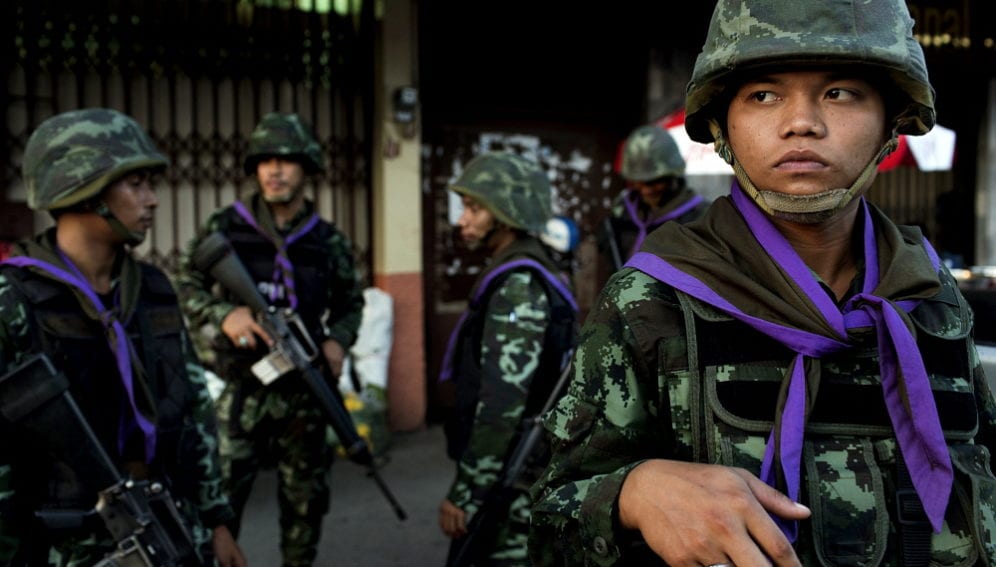By: Mike Ives
Send to a friend
The details you provide on this page will not be used to send unsolicited email, and will not be sold to a 3rd party. See privacy policy.
[HANOI] Military organisations of South-East Asian countries can help in the fight against malaria, a new study reports, but they are also “under-recognised” transmission reservoirs of malaria infections.
Militaries in the region "would certainly add a tremendous amount of ground game” to malaria-control efforts, says Lt. Col. David Saunders, co-author of the study published this month in the medical journal Trends in Parasitology.
“But the first step is to clean up your own backyard,” adds Saunders, who is also chief of the department of immunology and medicine at the Armed Forces Research Institute of Medical Sciences, a research collaboration between the US and Thai military establishments.
The study was also a collaboration among researchers at militaries in Cambodia, the Philippines, Thailand and the United States. It surveyed “military-specific” malaria screening and treatment efforts in these three South-East Asian countries.
More than 30 million people are infected with malaria each year in the Greater Mekong Subregion, which spans mainland South-East Asia and the south western Chinese province of Yunnan.
Although regional transmission rates are declining, military personnel face high risks of contracting the disease while working on international peacekeeping missions, particularly in Sub-Saharan Africa, the study reported. In their own countries, they are also vulnerable to malaria infection in both conflict zones and forested border areas.
In Thailand, for example, 572 soldiers contracted malaria on the Thai side of the disputed Thai-Cambodian border in 2010, accounting for a quarter of the area’s malaria patients seeking treatment, according to the study.
“Malaria in South-East Asia inevitably affects those crossing borders or who are otherwise out in the jungle at night,” Dennis Shanks, director of the Australian Army Malaria Institute, tells SciDev.Net by email. “Rubber tappers, soldiers on guard duty, gem miners and illegal loggers all fall in this category.”
Studies in Colombia and Somalia have shown that using military uniforms and clothing treated with the insecticide permethrin can reduce malaria infections, but it is unclear whether that approach is applicable to the Greater Mekong Subregion, the study said.
Militaries working in malaria-endemic areas of South-East Asia could be pilot populations for testing elimination strategies in migrant and mobile border populations, as well as “focal points” for malaria control efforts, especially in remote border areas.
But the study notes military treatment facilities often have fewer resources than those serving civilian counterparts, and many donor agencies are reluctant to fund malaria control in militaries because that can be perceived as military aid.
It is also difficult to measure the effectiveness of a malaria intervention program when the target is a transient population, and some border populations “may not be eager” to encounter military personnel, Saunders tells SciDev.Net.
But, he adds, an increased military role in malaria control could both reduce infections and boost the militaries' public image.
“This is really a win-win,” Saunders says.
Link to abstract in Trends in Parasitology
This article has been produced by SciDev.Net's South-East Asia & Pacific desk.
References
Trends in Parasitology doi: 10.1016/j.pt.2014.10.002 (2014)














